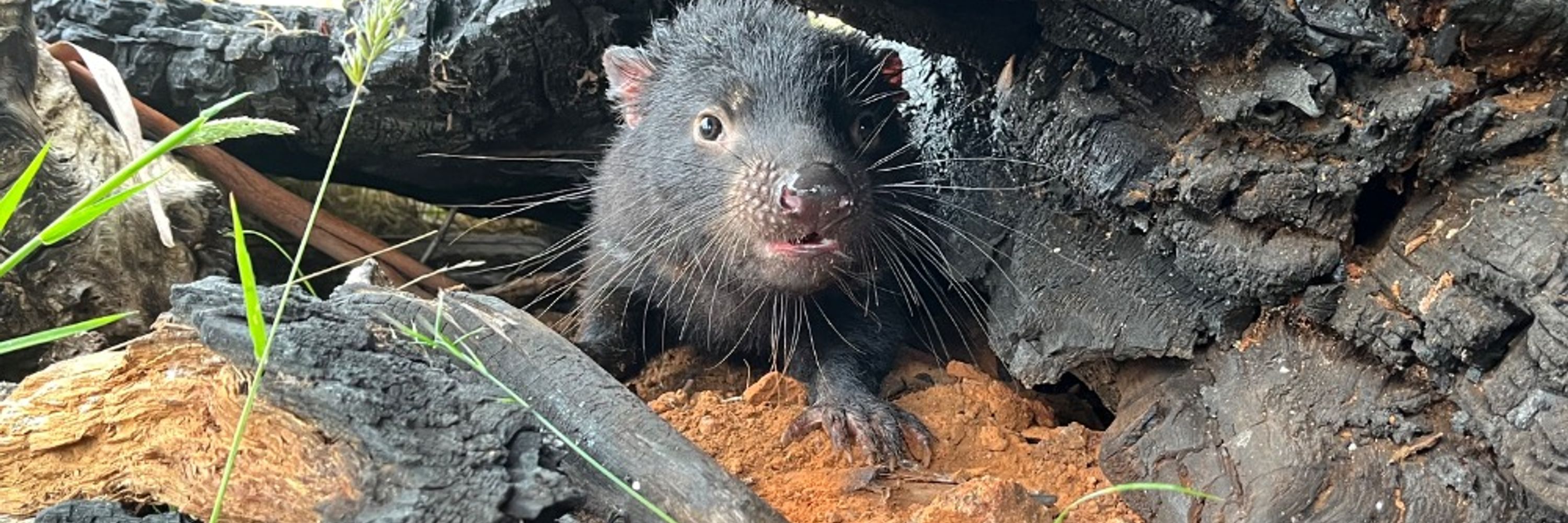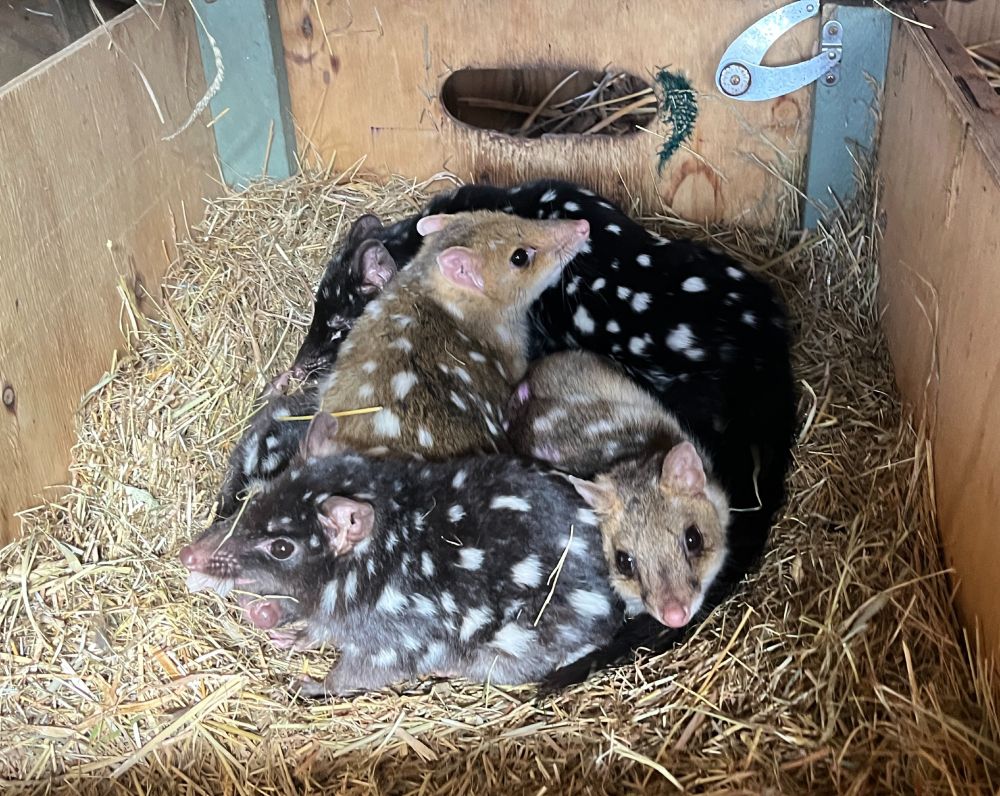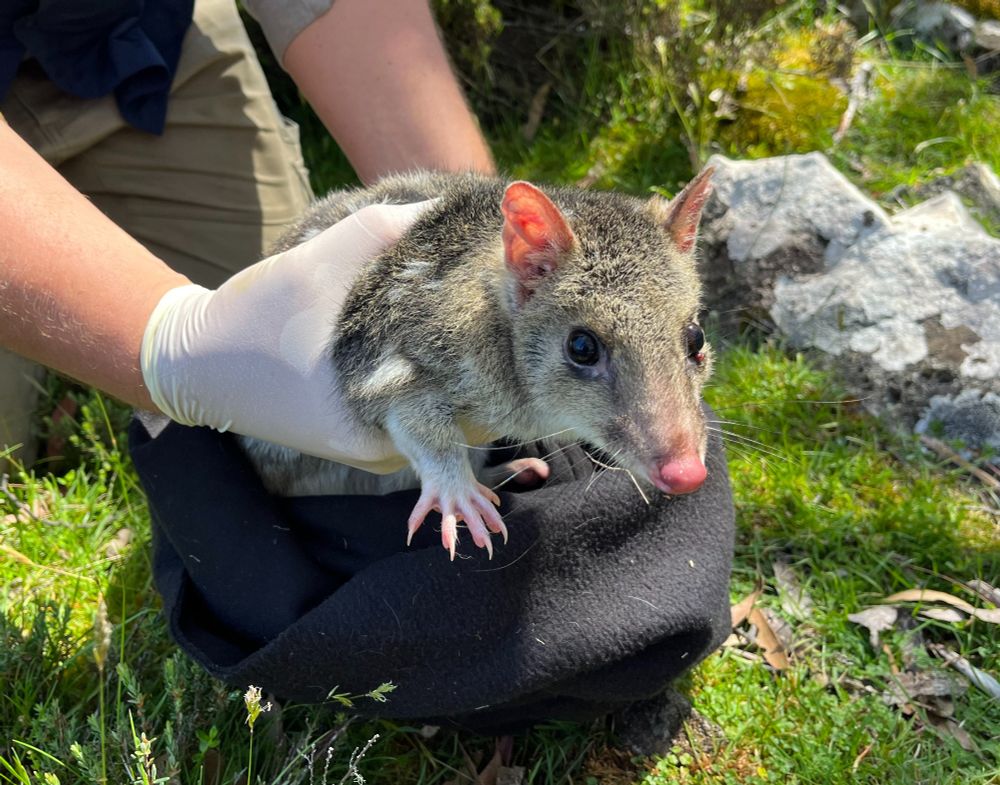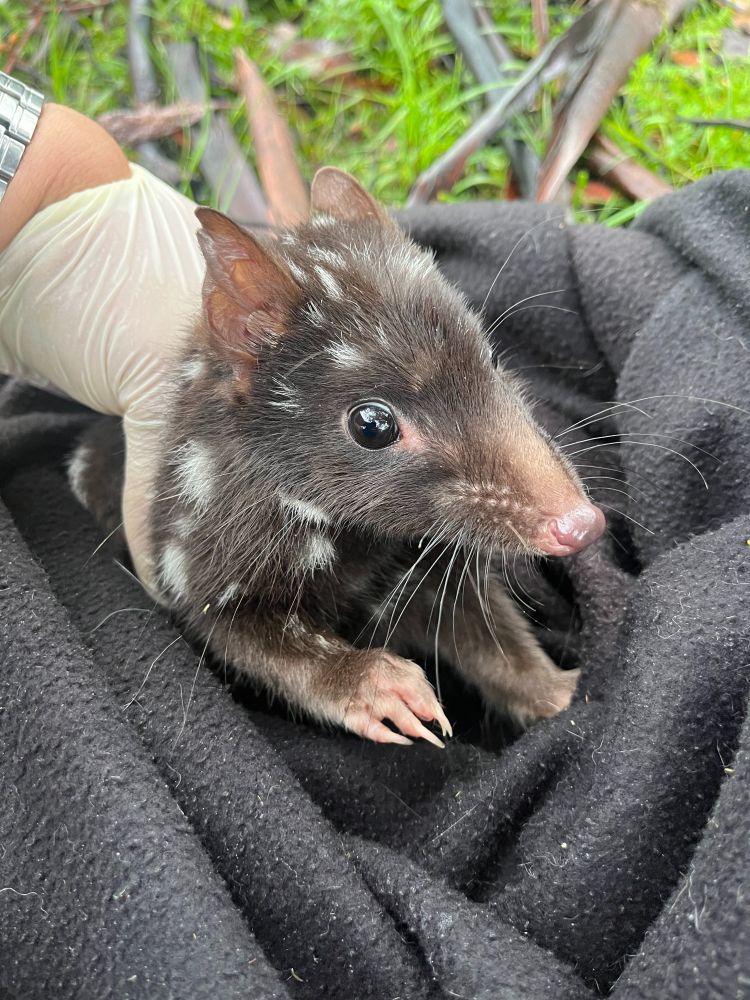
Dr David Hamilton
@drdevildave.bsky.social
Conservation Equollogist | Lutruwita, Tasmania | Tasmanian devil advocate & accidental quoll scientist, posting mainly science & quoll puns
Reposted by Dr David Hamilton
It's bizarre. I can think of at least 3 scientific publications that predict (i.e., model) the uncontrolled explosion of deer across Tas. None of them were referred to in the report. weirdddd
October 2, 2025 at 4:28 AM
It's bizarre. I can think of at least 3 scientific publications that predict (i.e., model) the uncontrolled explosion of deer across Tas. None of them were referred to in the report. weirdddd
The City of Platypuses!!
September 29, 2025 at 8:25 AM
The City of Platypuses!!
Harry, why is your dog stealing quoll food!?
August 10, 2025 at 11:22 PM
Harry, why is your dog stealing quoll food!?
Should note that the devils can, & do, extract themselves from this situation perfectly well. There’s no denying them food…
August 10, 2025 at 6:52 AM
Should note that the devils can, & do, extract themselves from this situation perfectly well. There’s no denying them food…
I am here for the Captain Quoll rebrand!!
August 10, 2025 at 6:40 AM
I am here for the Captain Quoll rebrand!!
That’s a funky looking EQ - its vibe is all wrong!
June 23, 2025 at 3:40 AM
That’s a funky looking EQ - its vibe is all wrong!
Whoops, sorry - that wasn't meant to be the take-home! The captive-bred quolls did great, we just have to refine methods in terms of which individuals are released to help them with breeding. So a focus on juveniles & adults who have bred previously in future, which is exactly what we're doing ☺️
June 18, 2025 at 1:33 AM
Whoops, sorry - that wasn't meant to be the take-home! The captive-bred quolls did great, we just have to refine methods in terms of which individuals are released to help them with breeding. So a focus on juveniles & adults who have bred previously in future, which is exactly what we're doing ☺️
This work was the result of a great collaboration between @tasland.bsky.social, @utas.edu.au, WWF Australia and the Tasmanian Quoll Conservation Program (made up in part by Bonorong Wildlife Sanctuary, Devils@Cradle, East Coast Nature World & Trowunna Wildlife Sanctuary)
June 18, 2025 at 12:29 AM
This work was the result of a great collaboration between @tasland.bsky.social, @utas.edu.au, WWF Australia and the Tasmanian Quoll Conservation Program (made up in part by Bonorong Wildlife Sanctuary, Devils@Cradle, East Coast Nature World & Trowunna Wildlife Sanctuary)
Another interesting side finding was the first (that we know of) genetic confirmation of multiple paternity in eastern quolls, with multiple litters found to have been fathered by more than one male quoll!

June 18, 2025 at 12:29 AM
Another interesting side finding was the first (that we know of) genetic confirmation of multiple paternity in eastern quolls, with multiple litters found to have been fathered by more than one male quoll!
Useful lessons to be learned from this for future translocations of this species, with a key one being around releasing reproductively naive adult quolls. They were able to survive well in the environment, but may not have been able to translate that to breeding success.
June 18, 2025 at 12:29 AM
Useful lessons to be learned from this for future translocations of this species, with a key one being around releasing reproductively naive adult quolls. They were able to survive well in the environment, but may not have been able to translate that to breeding success.
However, genetic analysis of the next generation found no evidence that any of them had a captive-bred parent!
While we may have missed some juveniles in our sampling, this (at the least) indicates that the captive-bred quolls had lower breeding success than their wild counterparts
While we may have missed some juveniles in our sampling, this (at the least) indicates that the captive-bred quolls had lower breeding success than their wild counterparts

June 18, 2025 at 12:29 AM
However, genetic analysis of the next generation found no evidence that any of them had a captive-bred parent!
While we may have missed some juveniles in our sampling, this (at the least) indicates that the captive-bred quolls had lower breeding success than their wild counterparts
While we may have missed some juveniles in our sampling, this (at the least) indicates that the captive-bred quolls had lower breeding success than their wild counterparts
We also wanted to examine the genetic effects of the supplementation, so sampled the next generation of quolls post-release.
This was a key part of an Honour's project by Jessica Morrison, who's the lead author on the study
This was a key part of an Honour's project by Jessica Morrison, who's the lead author on the study

June 18, 2025 at 12:29 AM
We also wanted to examine the genetic effects of the supplementation, so sampled the next generation of quolls post-release.
This was a key part of an Honour's project by Jessica Morrison, who's the lead author on the study
This was a key part of an Honour's project by Jessica Morrison, who's the lead author on the study

